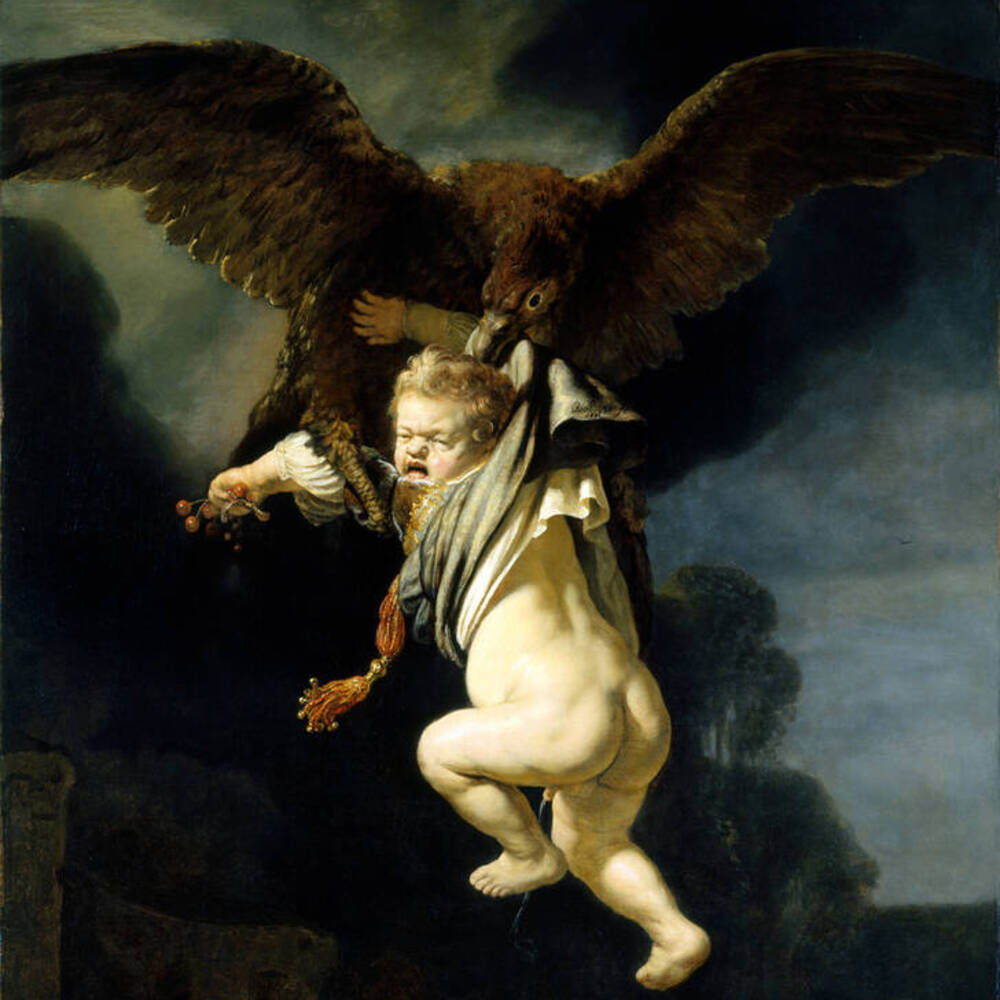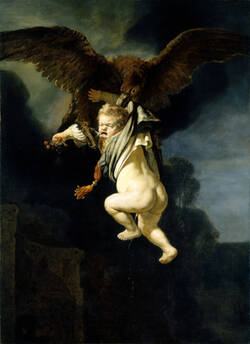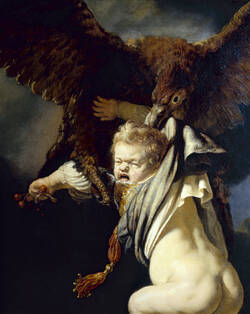In this dramatic scene, Rembrandt depicts a boy of about two years of age desperately thrashing about and screaming as he is lifted into the air by an eagle which has grabbed him by his clothing. The boy Ganymede was described in antique literature as a handsome youth. Unlike the artists from antiquity to the Baroque, however, Rembrandt broke with the classical pictorial tradition and transformed the image in a manner that must have been shocking to his contemporaries.
Further Media



In antiquity, Ganymede’s abduction was a very popular subject. Not only does Homer mention the story, but so do the Roman poets Ovid and Virgil. In brief, the story goes like this:
Ganymede is a son of the King of Troy – and a very attractive youth. In Homer’s words, he was ‘the most beautiful of mortals’. His beauty had not gone unnoticed on Mount Olympus, the home of the gods. And the gods wanted Ganymede as their cup bearer – none more so than Zeus himself, king of the gods and renowned for his many lovers. Zeus fell in love with Ganymede and decided to act. Ganymede was out hunting with friends when Zeus swept down in the shape of an eagle, took hold of the youth, and carried him off. Ganymede’s friends tried to reach out to him, but in vain.
Arriving on Mount Olympus, Zeus made Ganymede his cup bearer – much to the anger of Zeus’s wife Hera, who was renowned for her jealousy. Last but not least, Zeus also granted Ganymede immortality and set him in the night sky for all to see – as the constellation of Aquarius, the water carrier.
- Location & Dating
- 1635
- Material & Technique
- Oil on canvas
- Dimenions
- 177 x 129 cm
- Museum
- Gemäldegalerie Alte Meister
- Inventory number
- Gal.-Nr. 1558